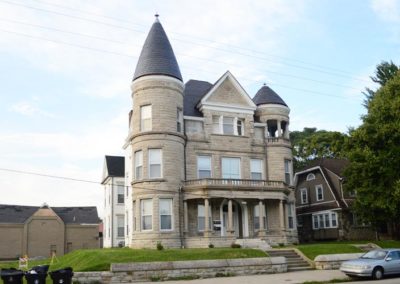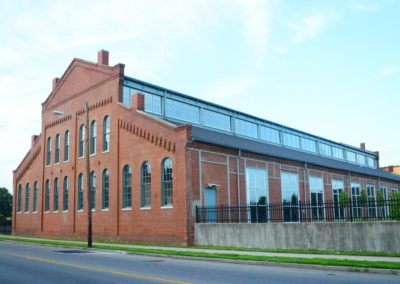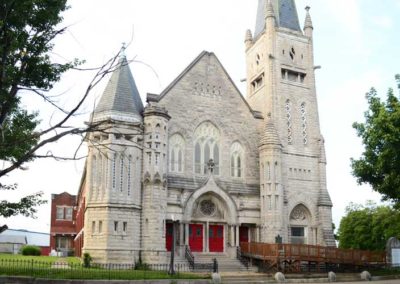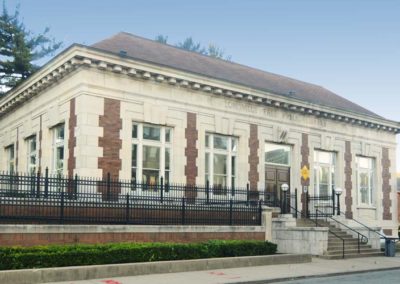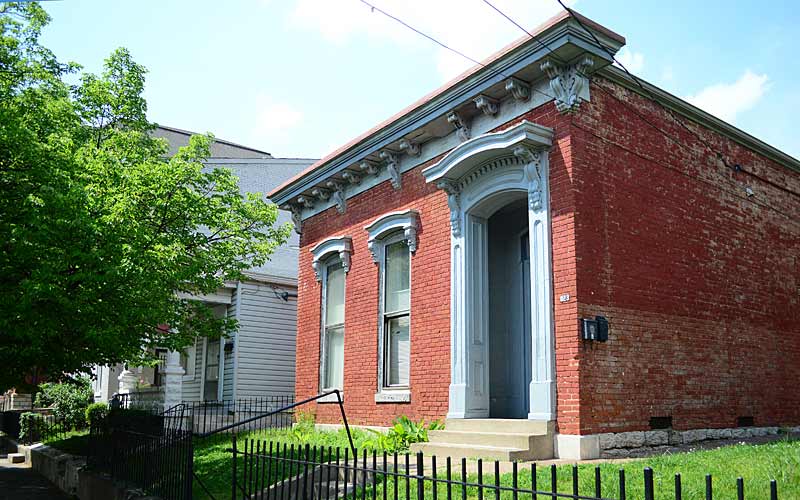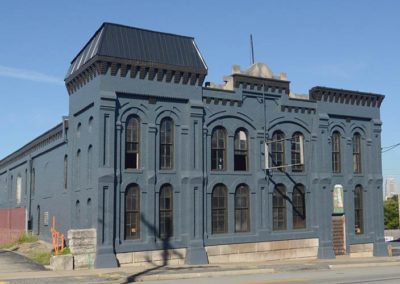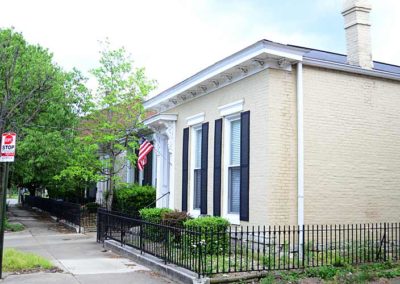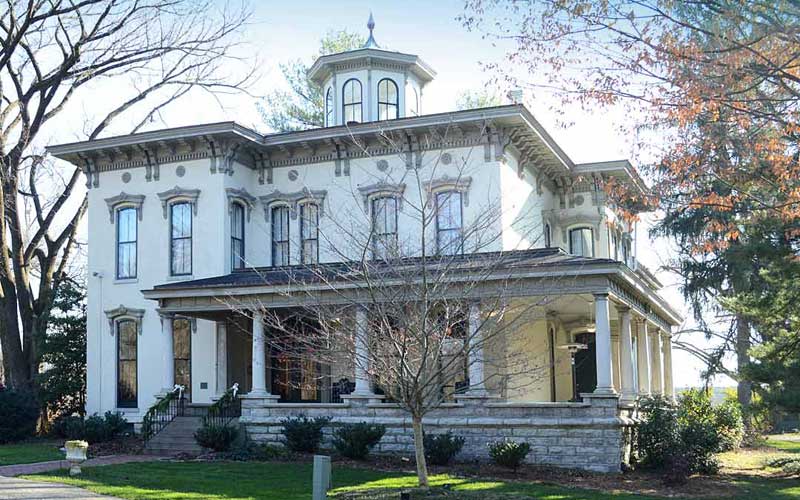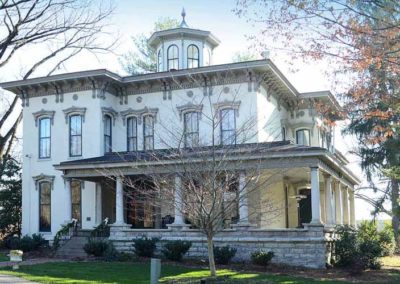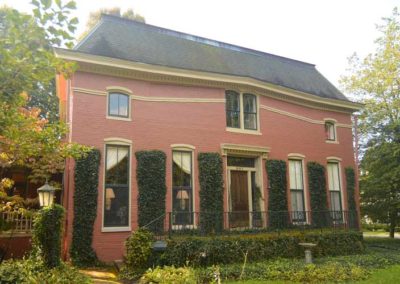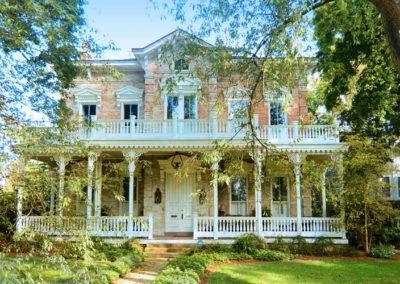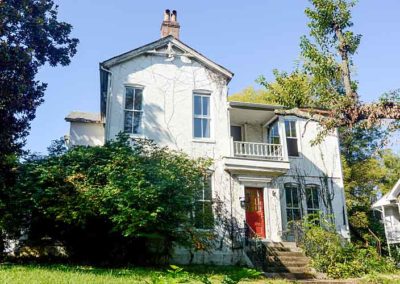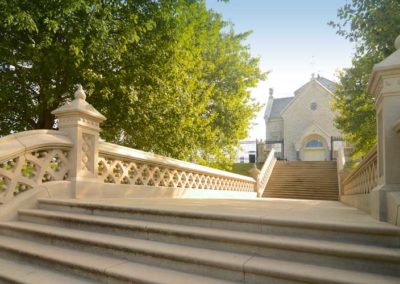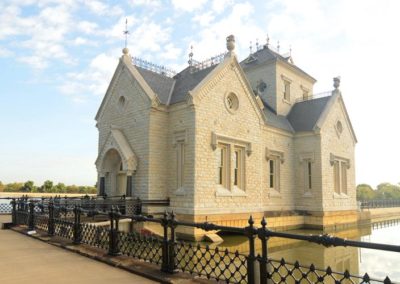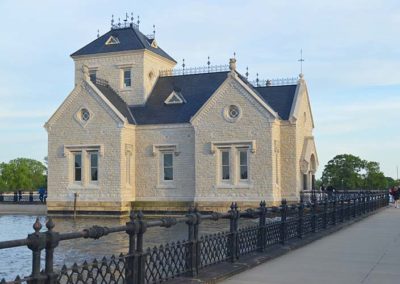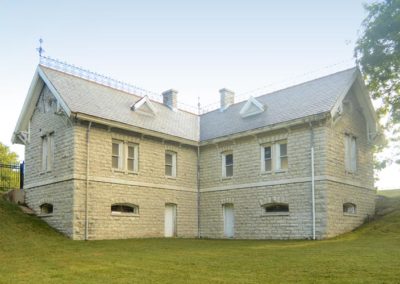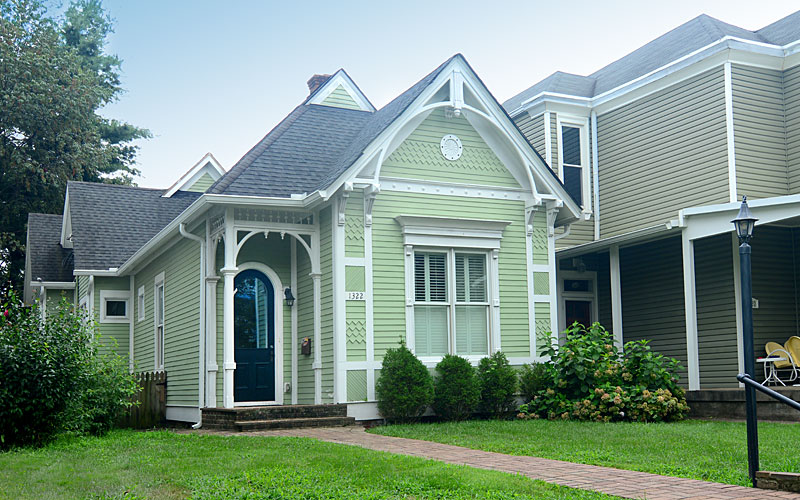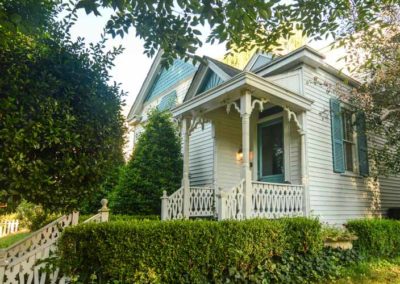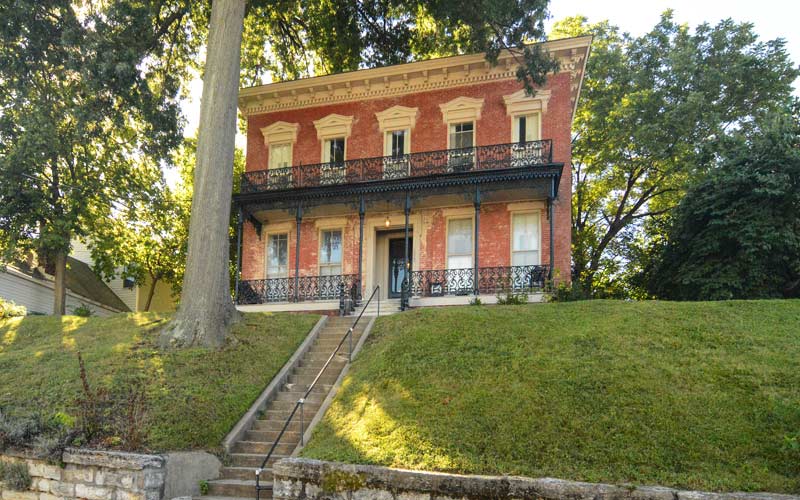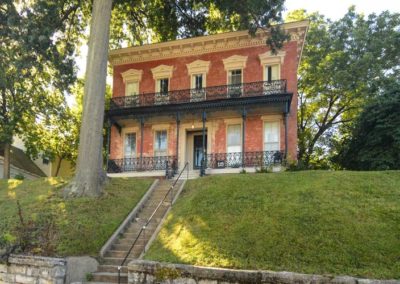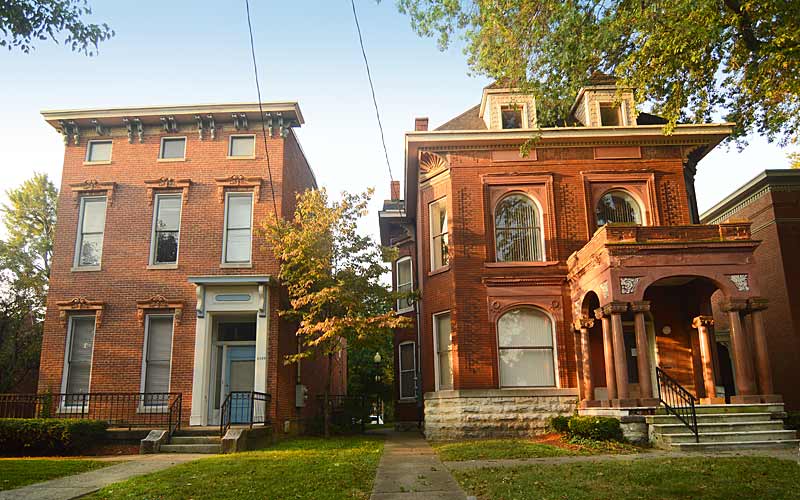
Russell
Russell

Once a blend of wealthy, working-class and poor people. By the 1830s, free blacks began buying property west of 9th St. Affluent white families built elegant mansions on Walnut, Chestnut, and Jefferson Sts. in what was once the city’s most fashionable neighborhood.
By the 1890s white families began moving towards the east end. African Americans began moving west of 21st St. after World War I. By the 1930s the neighborhood was predominantly black.
By the 1940s Russell had become “Louisville’s Harlem” as African American theaters, restaurants, and night clubs lined area streets. Following World War II many middle class blacks left for newly integrated neighborhoods in the south and east ends.
Walnut Street, now Muhammad Ali Blvd., was a mecca for black entrepreneurs and big-name entertainers who performed at the popular nightspots Top Hat Club, Charlie Moore’s, The Idle Hour and Joe’s Palm Room.
Urban renewal efforts in the 1960s had the area’s business districts razed and many public housing complexes built.
The Western Branch of the Louisville Free Public Library, at 10th St. and Chestnut, America’s first public library open to African-Americans, opened in 1908.
Immediately west of downtown and named for a local African American educator Harvey Clarence Russell Sr. who moved to the area in 1926. Boundaries are W. Market St. on the north, 9th St. on the east, W. Broadway on the south and I-264 on the west.
